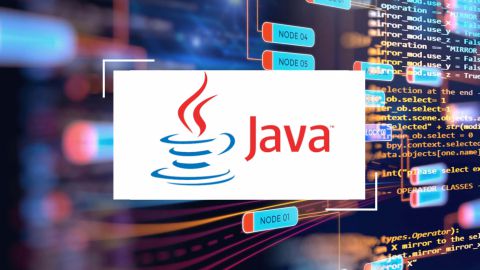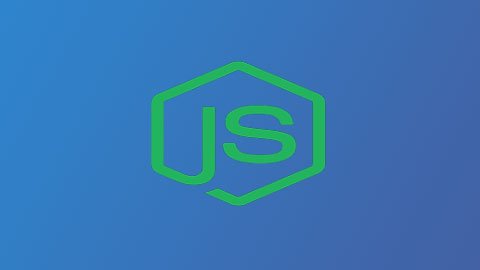What you'll get
- Job Credibility
- Certification Valid for Life
- On-demand video*
- E-Book
- Self-Paced Learning
- Certificate of Completion
Exam details
- Mode of Exam : Online
- Duration : 1 Hour
- Multiple Choice Questions are asked
- No. of Questions are asked : 50
- Passing Marks : 25 (50%)
- There is no negative marking
Angular training online is attracting students to learn this skill and be an Angular professional. Do you want the same? This course will bring you the same. Angular is maintained by Google and also its open-source web application framework. In this course, you will learn the essentials of this framework. We have aimed to provide you all the industrial information in this course whether it is about using TypeScript, raw DOM elements, Injection, or any other commands.
The certification in Angular by Acme Collins School provides you the knowledge of concepts like introduction, CLI, Angular changes, routing, pipes, observables, class testing, and application deployment. You also learn other crucial elements like building dynamic, responsive, and user-friendly web applications.
If you want to become a web application developer and want to create a dynamic or progressive web application. So, this course is a great resource for you. Also, you can build mobile applications as well with these open-source applications. This is also essential to learn if you are getting a job in MNC as a developer. Google itself manages this, but it's a most advanced framework and efficient as well.
Angular is used by many well-known companies as their front end development web application framework. For example, Google, YouTube, Forbs, Microsoft, Nike, and many other companies. After completing this wonderful course you can be a millionaire as in India these professionals earn up to 10,00,000 and $90,000+ outside India.
For enrolling in this course you need to be familiar with the basic programming language like Java and HTML. Also, you are a developer who wants to learn Angular then you can take this course.
Course Content
-
What is Angular?
-
Angular Versus Angular 2 Versus Latest Angular Version
-
Setting Up the Project and First Application
-
Editing the First Application
-
Course Structure
-
Getting the Most Out of the Course
-
What is TypeScript?
-
Setting Up a Basic Project Using Bootstrap for Styling
-
Module Introduction
-
Loading and Starting an Angular Application
-
Important Components
-
Creating a New Component
-
Understanding the Role of AppModule and Component Declaration
-
Using Custom Components
-
Creating Components with the Command Line Input (CLI) and Nesting Components
-
Working with Component Templates
-
Working with Component Styles
-
Understanding the Component Selector
-
Assignment Solution
-
What is Data Binding?
-
String Interpolation
-
Property Binding
-
Property Binding Versus String Interpolation
-
Event Binding
-
Passing and Using Data with Event Binding
-
Two-Way Data Binding
-
Combining All Forms of Data Binding
-
Assignment Solution
-
Understanding Directives
-
Using the ngIf Directive to Display Data Conditionally
-
Enhancing the ngIf Directive with an Else Condition
-
Styling Elements Dynamically with the ngStyle Directive
-
Applying CSS Classes Dynamically with the ngClass Directive
-
Displaying Lists Using the ngFor Directive
-
Assignment Solution
-
Getting the Index When Using the ngFor Directive
-
Project Introduction
-
Planning the Application
-
Setting Up the Application
-
Creating Components
-
Using Components
-
Adding a Navigation Bar
-
Creating a "Recipe" Model
-
Adding Content to the Recipes' Components
-
Displaying a List of Recipes Using the ngFor Directive
-
Displaying Recipe Details
-
Working on the ShoppingList Component
-
Creating an "Ingredients" Model
-
Creating and Displaying the Shopping List
-
Adding a Shopping List Edit Section
-
Understanding Angular Error Messages
-
Debugging Code in the Browser Using Source Maps
-
Using the Augury Plug-In for Diving into Angular Applications
-
Module Introduction
-
Splitting Applications into Components
-
Property and Event Binding Overview
-
Binding to Custom Properties
-
Assigning an Alias to Custom Properties
-
Binding to Custom Events
-
Assigning an Alias to Custom Events
-
Custom Property and Event Binding Summary
-
Understanding View Encapsulation
-
More on View Encapsulation
-
Using Local References in Templates
-
Getting Access to the Template and Document Object Model (DOM) with the @ViewChild Component
-
Projecting Content into Components with ng-content
-
Understanding the Component Lifecycle
-
Seeing Lifecycle Hooks in Action
-
Lifecycle Hooks and Template Access
-
Getting Access to ng-content with the @ContentChild Parameter Decorator
-
Introduction
-
Adding Navigation with Event Binding and the ngIf Directive
-
Passing Recipe Data with Property Binding
-
Passing Data with Event and Property Binding (Combined)
-
Allowing the User to Add Ingredients to the Shopping List
-
Module Introduction
-
ngFor and ngIf Directives Recap
-
ngClass and ngStyle Recap
-
Creating a Basic Attribute Directive
-
Using the Renderer to Build a Better Attribute Directive
-
Using the @HostListener() Decorator to Listen to Host Events
-
Using the @HostBinding() Decorator to Bind to Host Properties
-
Binding to Directive Properties
-
What Happens Behind the Scenes on Structural Directives
-
Building a Structural Directive
-
Understanding the ngSwitch Directive
-
Building and Using a Dropdown Directive
-
Module Introduction
-
Why would You Need Services?
-
Creating a Logging Service
-
Injecting the Logging Service into Components
-
Creating a Data Service
-
Understanding the Hierarchical Injector
-
How Many Instances of Service are Required?
-
Injecting Services into Other Services
-
Using Services for Cross-component Communication
-
Introduction
-
Setting Up the Services
-
Managing Recipes in a Recipe Service
-
Using a Service for Cross-Component Communication
-
Adding the Shopping List Service
-
Using Services for Pushing Data from A to B
-
Adding Ingredients to Recipes
-
Passing Ingredients from Recipes to the Shopping List (Through a Service)
-
Module Introduction
-
Why do We Need a Router?
-
Setting Up and Loading Routes
-
Navigating with Router Links
-
Understanding Navigation Paths
-
Styling Active Router Links
-
Navigating Programmatically
-
Using Relative Paths in Programmatic Navigation
-
Passing Parameters to Routes
-
Fetching Route Parameters
-
Fetching Route Parameters Reactively
-
An Important Note about Route Observables
-
Passing Query Parameters and Fragments
-
Retrieving Query Parameters and Fragments
-
Some Common Gotchas
-
Setting Up Child (Nested) Routes
-
Using Query Parameters – Practice
-
Configuring the Handling of Query Parameters
-
Redirecting and Wildcard Routes
-
Outsourcing the Route Configuration
-
An Introduction to Guards
-
Protecting Routes with the canActivate() Method
-
Protecting Child (Nested) Routes Using the canActivateChild() Method
-
Using a Fake Authentication Service
-
Controlling Navigation with the canDeactivate() Method
-
Passing Static Data to a Route
-
Resolving Dynamic Data with the Resolve Guard
-
Understanding Location Strategies
-
Planning the General Structure
-
Setting Up Routes
-
Adding Navigation to the Application
-
Marking Active Routes
-
Fixing Page Reload Issues
-
Child Routes: Challenge
-
Adding Child Routing Together
-
Configuring Route Parameters
-
Passing Dynamic Parameters to Links
-
Styling Active Recipe Items
-
Adding Editing Routes
-
Retrieving Route Parameters
-
Programmatic Navigation to the Edit Page
-
Module Introduction
-
Analyzing Angular Observables
-
Getting r to the Core of Observables
-
Building a Custom Observable
-
Errors and Completion
-
Observables
-
Understanding Operators
-
Subjects
-
Improving the Reactive Service with Observables (Subjects)
-
Module Introduction
-
Why do We Need Angular's Help?
-
Template-Driven (TD) Versus Reactive Approach
-
Creating an Example Form
-
Template-Driven (TD): Creating Forms and Registering the Controls
-
Template-Driven (TD): Submitting and Using a Form
-
Template-Driven (TD): Understanding Form State
-
Template-Driven (TD): Accessing a Form Using the @ViewChild Decorator
-
Template-Driven (TD): Adding Validation to Check User Input
-
Template-Driven (TD): Using the Form State
-
Template-Driven (TD): Displaying Validation Error Messages
-
Template-Driven (TD): Set Default Values Using the ngModel Property Binding
-
Template-Driven (TD): Using ngModel with Two-Way Binding
-
Template-Driven (TD): Grouping Form Controls
-
Template-Driven (TD): Handling Radio Buttons
-
Template-Driven (TD): Setting and Patching Form Values
-
Template-Driven (TD): Using Form Data
-
Template-Driven (TD): Resetting Forms
-
Introduction to the Reactive Approach
-
Reactive: Form Template Setup
-
Reactive: Creating a Form in Code
-
Reactive: Syncing HTML and Form
-
Reactive: Submitting a Form
-
Reactive: Adding Validation
-
Reactive: Getting Access to Controls
-
Reactive: Grouping Controls
-
Reactive: Arrays of FormControl (FormArray)
-
Reactive: Creating Custom Validators
-
Reactive: Using Error Codes
-
Reactive: Creating a Custom Asynchronous Validator
-
Reactive: Reacting to Status or Value Changes
-
Reactive: Setting and Patching Values
-
Introduction
-
TD: Adding the Shopping List Form
-
Adding Validation to a Form
-
Allowing Selection of Items in a List
-
Loading Shopping List Items into a Form
-
Updating Existing Items
-
Resetting a Form
-
Allowing the User to Clear (Cancel) a Form
-
Allowing the Deletion of Shopping List Items
-
Creating a Template for the (Reactive) Recipe Edit Form
-
Creating a Form to Edit Recipes
-
Syncing HTML with a Form
-
Adding Ingredient Controls to a FormArray
-
Adding New Ingredient Controls
-
Validating User Input
-
Submitting the Recipe Edit Form
-
Adding the Delete and Clear (Cancel) Functionality
-
Redirecting a User (After Deleting a Recipe)
-
Adding an Image Preview
-
Providing the Recipe Service Correctly
-
Deleting Ingredients and Some Finishing Touches
-
Introduction and Why Pipes are Useful
-
Using Pipes
-
Parametrizing Pipes
-
Learning More About Pipes
-
Chaining Multiple Pipes
-
Creating a Custom Pipe
-
Parametrizing a Custom Pipe
-
Example: Creating a Filter Pipe
-
Pure and Impure Pipes (or: How to "Fix" the Filter Pipe?)
-
Understanding the "Async" Pipe
-
A New Integrated Development Environment (IDE)
-
Module Introduction
-
How does Angular Interact with Backends?
-
Anatomy of an HTTP Request
-
Setting Up Backend (Firebase)
-
Sending a POST Request
-
Sending a GET Request
-
Using Reactive Extensions for JavaScript (RxJS) Operators to Transform Response Data
-
Using Types with HttpClient
-
Outputting Posts
-
Showing a Loading Indicator
-
Using a Service for HTTP Requests
-
Working of Services and Components
-
Sending a DELETE Request
-
Handling Errors
-
Using Subjects for Error Handling
-
Using the catchError Operator
-
Error Handling and User Experience (UX)
-
Setting Headers
-
Adding Query Parameters
-
Observing Different Types of Responses
-
Changing the Response Body Type
-
Introducing Interceptors
-
Manipulating Request Objects
-
Response Interceptors
-
Multiple Interceptors
-
Module Introduction
-
Setting Up Backend (Firebase)
-
Setting Up the Data Storage Service
-
Storing Recipes
-
Fetching Recipes
-
Transforming Response Data
-
Resolving Data before Loading
-
Fixing a Bug with the Resolver
-
Module Introduction
-
Working of Authentication
-
Adding the Authentication Page
-
Switching between Authentication Modes
-
Handling Form Input
-
Preparing the Backend
-
Preparing the Signup Request
-
Sending the Signup Request
-
Adding Loading Spinner and Error Handling Logic
-
Improving Error Handling
-
Sending Login Requests
-
Handling Login Error
-
Creating and Storing the User Data
-
Reflecting the Authentication State in the User Interface (UI)
-
Adding a Token to Outgoing Requests
-
Attaching a Token with an Interceptor
-
Adding Logout
-
Adding Auto-Login
-
Adding Auto-Logout
-
Adding an Authentication Guard
-
Module Introduction
-
Adding an Alert Modal Component
-
Understanding the Different Approaches
-
Using the ngIf Directive
-
Preparing Programmatic Creation
-
Creating a Component Programmatically
-
Understanding entryComponents
-
Data Binding and Event Binding
-
Module Introduction
-
What are Modules?
-
Analyzing the AppModule Class
-
Getting Started with Feature Modules
-
Splitting Modules Correctly
-
Adding Routes to Feature Modules
-
Component Declarations
-
ShoppingList Feature Module
-
Understanding Shared Modules
-
Understanding Core Modules
-
Adding an Authentication Feature Module
-
Understanding Lazy Loading
-
Implementing Lazy Loading
-
More Lazy Loading
-
Preloading Lazy-Loaded Code
-
Modules and Services
-
Loading Services Differently
-
Ahead-of-time (AOT) Compilation
-
Module Introduction
-
Deployment Preparations and Important Steps
-
Using Environment Variables
-
Deployment Example: Firebase Hosting
-
Module Introduction
-
What is Application State?
-
What is NgRx?
-
Getting Started with Reducers
-
Adding Logic to the Reducer
-
Understanding and Adding Actions
-
Setting Up the NgRx Store
-
Selecting State
-
Dispatching Actions
-
Multiple Actions
-
Preparing Update and Delete Actions
-
Updating and Deleting Ingredients
-
Expanding State
-
Managing More States Using NgRx
-
Removing Redundant Component State Management
-
First Summary and Cleanup
-
One Root State
-
Setting Up Authentication Reducer and Actions
-
Dispatching Authentication Actions
-
Authentication Finished
-
Important Note on Actions
-
Exploring NgRx Effects
-
Defining the First Effect
-
Effects and Error Handling
-
Logging in through NgRx Effects
-
Managing User Interface (UI) State in NgRx
-
Finishing the Login Effect
-
Preparing Other Authentication Actions
-
Adding Signup
-
Further Authentication Effects
-
Adding Auto-Login with NgRx
-
Adding Auto-Logout
-
Finishing Authentication Effects
-
Using the Store DevTools
-
The Router Store
-
Getting Started with NgRx for Recipes
-
Fetching Recipe Detail Data
-
Fetching Recipes and Using the Resolver
-
Fixing Authentication Redirect
-
Updating, Deleting, and Adding Recipes
-
Storing Recipes Using Effects
-
Cleanup Work
-
Module Introduction
-
Adding Angular Universal
-
Adding Angular Universal with NestJS
-
Adding a Server-side Build Workflow
-
Adding a NodeJS Server
-
Pre-rendering an Application on the Server
-
Introduction
-
Setting Up the Starting Project
-
Animation Triggers and State
-
Switching between States
-
Transitions
-
Advanced Transitions
-
Transition Phases
-
The "Void" State
-
Using Keyframes for Animations
-
Grouping Transitions
-
Using Animation Callbacks
-
Module Introduction
-
Adding Service Workers
-
Caching Assets for Offline Use
-
Caching Dynamic Assets and URLs
-
Introduction
-
Why Unit Tests?
-
Analyzing the Testing Setup (as Created by the Command Line Interface (CLI))
-
Running Tests (with the Command Line Interface (CLI))
-
Adding a Component and Some Fitting Tests
-
Testing Dependencies: Components and Services
-
Simulating Asynchronous Tasks
-
Using "fakeAsync" and "Tick"
-
Module Introduction
-
A r Look at the "ng new" Command
-
Integrated Development Environment (IDE) and Project Setup
-
Understanding the Configuration Files
-
Important Command Line Interface (CLI) Commands
-
The "angular.json" File - a r Look
-
Angular Schematics - an Introduction
-
The "ng add" Command
-
Using Custom "ng generate" Schematics
-
Updating Projects Using the "ng update" Command
-
Deploying with the "ng deploy" Command
-
Understanding "Differential Loading"
-
Managing Multiple Projects in One Folder
-
Angular Libraries - an Introduction
-
First Look at Angular Elements
Reviews
Related Courses
1- Select your Course for Certification.
2- Click on Buy Now.
3- Proceed to Checkout If You are registered User or Create an Account.
4- Choose Your Billing Address or Add New and Click on Continue.
5- Choose Payment Method and Click on Continue to Complete Your Payment.
6- After Successful Payment You will receive an Email regarding your order, and You can login your account in order to access the course and its exam.
7- After, You Finish an exam, and qualified it, you will be able to download your certificate immediately.
To buy a course, you need to click on the ‘Buy Now’ option available on the course page. After clicking on it, you can proceed ahead and make the payment of the course using a convenient mode of payment to buy it. For Help Watch a video here
After you have selected the course
that you wish to purchase, click on the ‘Buy Now’ option on the course page.
This will redirect you to the Checkout page. In case you wish to apply any
coupon code, the page will provide you an option to do so.
If you are new to the site, you will
be asked first to create an account, In this case, you will have to fill a form.
On the Checkout page, simply select
the payment mode that you wish to use for purchasing the course. The payment
options available are Credit/ Debit Card, Internet Banking, as well as UPI.
After making the payment successfully, you will receive a confirmation message as well as an email at the registered email address.
How To Make Payment of The Course - Watch Video
You can immediately start the course as per your convenience by going on the dashboard and entering the correct credentials. Check, How can I login to my course.
The
courses available here are completely online and, thus, offer the
flexibility to one to complete the course within his/her time. The course
duration mentioned in the course syllabus would be printed on the course certificate.
However, the user can finish the course in lesser time as well.
Step 1 - Login Your Account with the credentials (Email - ID and Password) you have created at the time of registration
Step 2 - Click on "MY COURSES"
Step 3 - Navigate the left panel of your browser screen and scroll down
Step 4 - At last, you will see EXAM option, click on that and the exam screen will appear with information such as No. of questions and exam time.
Step 5 - If you are preparing for it, Then Click on START EXAM. Know more, How To Take Exam
The minimum passing marks percentage for each course is 50%. Only once
the user passes the exam, he/she is eligible for the Certificate.
For verification of the course certificate, you have to simply scan the QR code or can use Certificate No to verify your certificate.
Click here to verify your certificate


-480x270.jpg)

